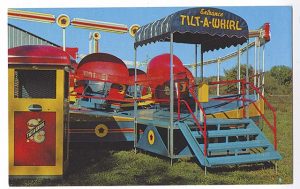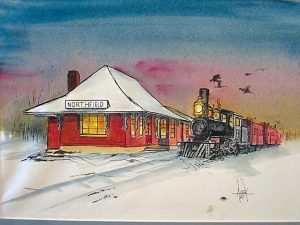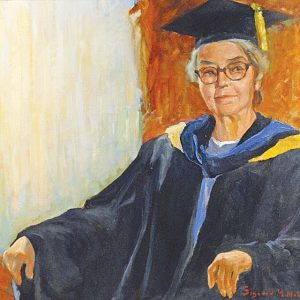
In the spring of 2015 the Northfield Historical Society and The Entertainment Guide teamed up to publish volumes 2 and 3 of selected Historic Happenings columns about St. Olaf and Carleton. (Volume 1, devoted to Northfield history, was published December 2014.)
In this column, I am going to call your attention to some of the extraordinary people and events from the two colleges in the town whose slogan is “Cows, Colleges and Contentment.” (Perhaps you will be inspired to buy the books to learn more, of course!)
There are two deans of women whose influence was immeasurable at the colleges and whose names have been preserved on dormitories. Margaret Evans of Carleton was professor of English literature and women’s dean at Carleton College from 1874 to 1908. She lived among the students, inspired long-remembered chats around the hearth and was a popular speaker, active in women’s clubs and missions. Invited to become the dean of prestigious Wellesley College in Massachusetts, she said, “I am building my brain and heart into Carleton College and cannot desert her.” The reading circle Evans started in the fall of 1876 was renamed after her in 1925 and is still in existence today. It was front-page news in 1914 when she unexpectedly, at age 72, married retired Carleton professor George Huntington, age 79, and took off for a honeymoon in Hawaii. Gertrude Hilleboe (St. Olaf Class of 1912) was women’s dean at St. Olaf from 1915 to 1958 and addressed concerns of women at a time when some were questioning the value of co-education. Hilleboe made it a priority to find housing for her girls when only one-fourth of the 400 women had on-campus housing. She rejoiced when, in 1938, Agnes Mellby Hall was built, housing 180 female students. In 1951, she lived for a year in the newly built Hilleboe Hall. When I spoke at a reunion banquet at St. Olaf last May, I found that many had stories to tell me about her, including the oft-repeated tale that she had warned girls not to wear red dresses lest men’s passions be aroused. (Professor Joseph Shaw discounts this one.)
One name stands out among the many distinguished college presidents: Larry Gould, the subject of Eric Hillemann’s 2012 biography, A Beacon So Bright: The Life of Laurence McKinley Gould. Gould was a noted geologist who had been second in command on the 1928-30 expedition to Antarctica with famed explorer Admiral Richard E. Byrd. Hired to be head (and only member) of the new Geology and Geography Department at Carleton in 1932, he became the legendary president of the college from 1945 to 1962. He built up the college’s reputation, bringing in quality faculty and excelling in fundraising, increasing endowments, gaining alumni support and new construction, including Carleton’s new library in 1956 which was named for him after his death in 1995 at the age of 98.
Yale-educated Reed Whittemore also brought academic renown to Carleton, teaching English at Carleton from 1947 to 1966. In 1960, Whittemore helped found the Carleton Miscellany literary magazine. He was twice consultant in poetry at the Library of Congress in Washington, D.C. (now known as the U.S. Poet Laureate) and author of 20 books of poetry, criticism, biography and literary journalism. George Soule, Bill Huyck, Wayne Carver and Marc Reigel contributed their memories of Whittemore (who died on April 6, 2012) in the Historic Happenings at Carleton College book.
Religion professor Fred B. Hill (Carleton Class of 1900) and his wife Deborah Sayles Hill, a Rhode Island heiress, commemorated family names in their $63,000 gift to construct Sayles-Hill Gymnasium, dedicated on Jan. 26, 1910. The first state high school basketball tournament was held here 1913-1923 and, since 1979, the building has served as Carleton’s Campus Center.
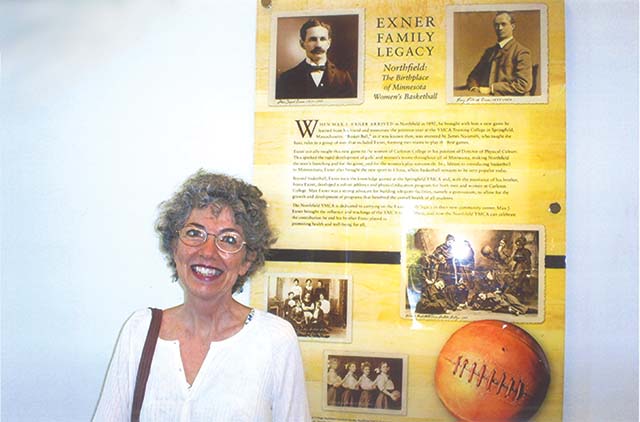
Both volumes contain stories about the long athletic history and rivalry of the colleges. Carleton had a head start in both basketball and football. Max Exner (Carleton Class of 1898) introduced the new game of “basket ball” to Carleton women, who were the first collegians to play the game in Minnesota. Exner had played in the very first game, invented by his roommate, James Naismith, at the Springfield YMCA training school in Massachusetts in 1891. Exner went on to build up YMCA programs in Kansas City and China and later developed sex education programs. Recently, Heide Exner Larson came up from LeClaire, Iowa, to Northfield’s YMCA to see the plaque installed there to honor her grandfather, Max, and his brother, Franz, who helped Max with athletics at Carleton.

Carleton first fielded a football team in 1891 and, from 1905 to 1917, had an amazing record of 66 wins, 17 losses and two ties. The 1916 team upset the University of Chicago team of legendary coach Amos Alonzo Stagg 7-0 in Chicago. Because of perceived dangers of the game, St. Olaf had no intercollegiate football until 1918. Due to World War I, St. Olaf had to form a joint Student Army Training Corps team with Carleton. The Carleton yearbook wrote that there was “deadly antagonism” from the start, with student bodies giving credit only to their representatives on the team.
Both books have the story of the first Goatrophy, inaugurated in October of 1931 and given to the winner of the annual St. Olaf-Carleton football contest. I was able to track down the name of the designer of this trophy, Dr. Ranthus B. Fouch, a Minneapolis dentist who also created what was called the Slab of Bacon trophy fought over by the universities of Minnesota and Wisconsin from 1930 to 1943 before Paul Bunyan’s ax. (Previously, credit had been given to an unnamed “St. Olaf carpenter.”) A different goat trophy is fought over in basketball. It originated in February of 1913 when a makeshift sawhorse resembling a goat was strung up in the rafters of the St. Olaf gym by Ole students who relinquished it when Carleton won both basketball clashes that season.
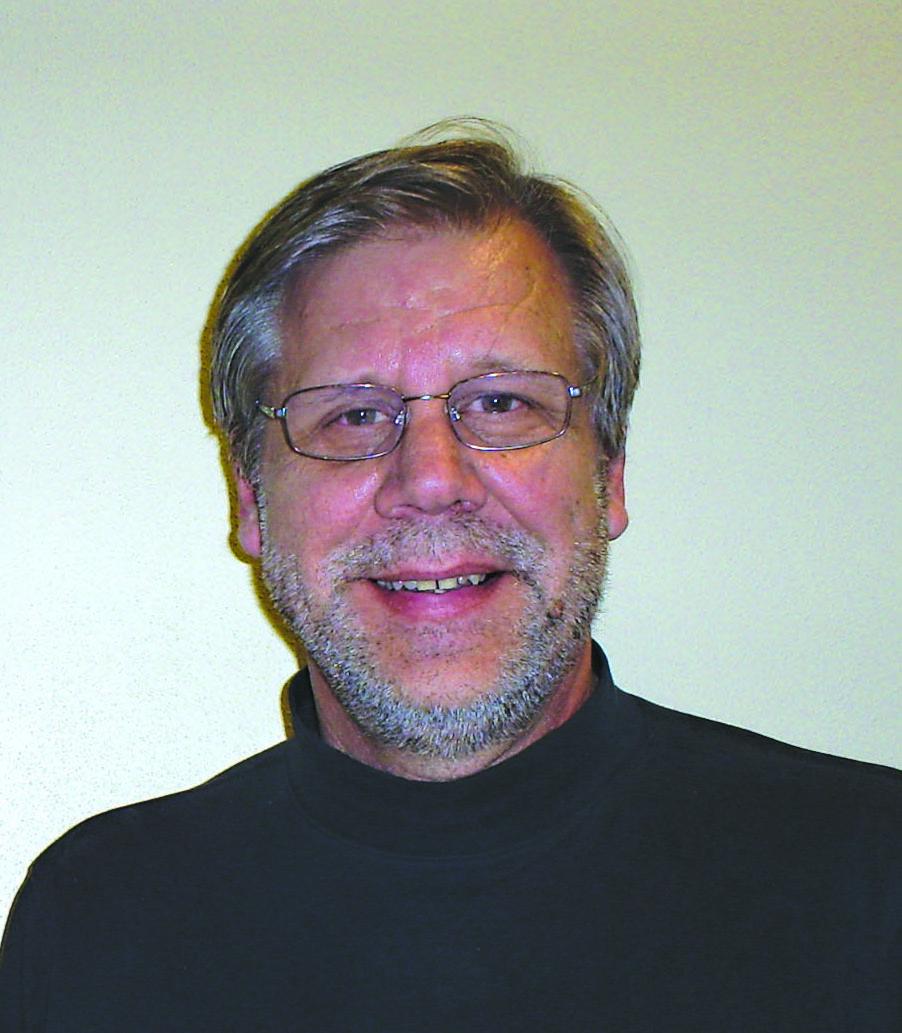

The tandem of and Dave Finholt brought an extraordinary era of basketball achievement to Northfield High School and St. Olaf between 1965 and 1972. Both had occasion to score records of 42 points in a game, Bundgaard for NHS in 1966 and Finholt at St. Olaf in 1969. And both contributed double figure performances in back-to-back wins over nemesis Carleton in the last week of January, 1971. Bundgaard is now enjoying retirement in Arizona, volunteering, biking, reading and traveling. Finholt has moved back to Northfield where he is now junior varsity basketball coach at NHS.
St. Olaf and Carleton played a historic football game on Sept. 17, 1977: the one and only NCAA-sanctioned metric football game. The event, which was initiated by Carleton chemistry professor Jerry Mohrig, was covered by national news media. “Cheer liters” led cheers and students wore T-shirts that proclaimed, “Drop back ten meters and punt.” Nine thousand people filled Carleton’s Laird Stadium, watching St. Olaf pound Carleton 43-0 on a specially marked metric field.
St. Olaf College is noted for its world-famous Choir, founded and directed from 1912 to 1943 by F. Melius Christiansen. I wrote about the 1920 St. Olaf Choir Eastern tour which established the reputation of the Choir on the national scene, but I also explored Christiansen’s lesser-known association with instrumental music. At six, he played a three-key clarinet in a band in Norway and became proficient on piano, organ and violin. After emigrating to the U.S. in 1888, he had visions of being a concert violinist. In 1903, he was hired to be the first musical director at St. Olaf and, in 1906, he directed the all-male, 46-member band in a tour of Norway, the first such tour to Europe of an American collegiate musical group. Christiansen also led the band to the Alaska-Yukon-Pacific Expedition in Seattle in 1909. In 1919 he turned the band over to J. Arndt Bergh to concentrate on the St. Olaf Choir until succeeded by his son, Olaf, in 1943.

When Olaf Christiansen (St. Olaf Class of 1925) retired in 1968, he was succeeded by Kenneth Jennings (St. Olaf Class of 1950), who had sung in the Choir under Olaf as a student. When Jennings returned as a faculty member in 1953, he taught a variety of music courses and initiated major choral-orchestral works with the Chapel Choir. While respectful of the past, Jennings told me that he gave the St. Olaf Choir singers “more freedom to be more expressive, individually” because he “felt it would refresh the sound of the Choir.” In 1970 the St. Olaf Choir was the only non-professional group to take part in the International Strasbourg Festival. The 75th anniversary of the Choir in 1986 was celebrated with a trip to the Orient to Japan, Taiwan, Hong Kong and the People’s Republic of China, with the Choir mastering songs in ten different languages. In 1988, the Choir opened the International Choral Festival of the Seoul Olympic Arts Festival in Korea, the only American choir invited. The Choir performed with the Minnesota Orchestra for more than 20 years. Jennings retired in 1990 and died this past Aug. 20, with a memorial service at St. John’s Lutheran Church on Sept. 18. The Choir, under current director Anton Armstrong, concluded the service with F. Melius Christiansen’s arrangement of Beautiful Savior.
Jimmy Gillette was a famed band director, composer and organist who came to Carleton in 1923. By 1926 he had developed a nationally known Carleton Symphony Band and wrote Pagan Symphony, which is considered to be the first American symphony for band. Gillette was also known for his Sunday afternoon organ recitals in Skinner Memorial Chapel. Before he left for a position in Lake Forest, Illinois, in 1938, he had played almost 400 recitals. He died at the age of 77 in 1963, but his name lives on in musical history.
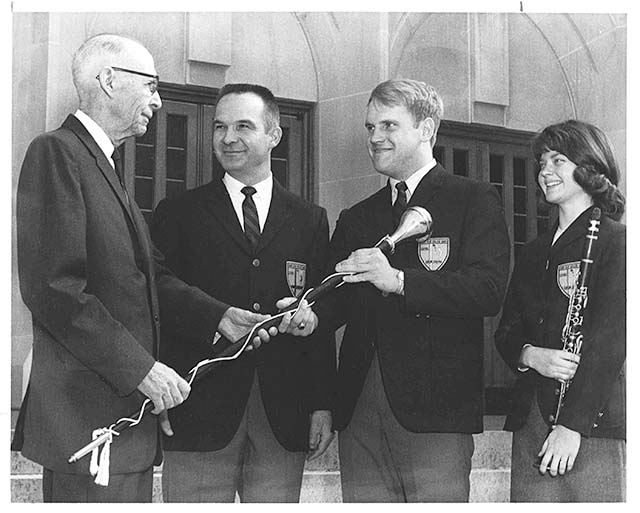
I have a personal connection to St. Olaf’s longtime band director, Miles (Mity) Johnson. I wrote about my memories of the 1966 tour of the St. Olaf Band to Norway, Denmark and Germany, which commemorated the 60th anniversary of the tour led by F. Melius Christiansen in 1906. Johnson was the “heart and soul” of the St. Olaf Band from 1957 to 1994, and my story includes a timeline of highlights of the life of this remarkable musician. (Johnson’s legacy is maintained by his successor, Timothy Mahr, St. Olaf Class of 1978.) After a six-year struggle with Alzheimer’s, Johnson passed away at the age of 75 the summer I moved here from New York in 2004. His wife, Myrna Johnson, told me a record of the St. Olaf Band playing Elsa’s Procession to the Cathedral was reaching its climax when he died.

Carleton had a May Fete tradition which started in 1909 and lasted for more than half a century. The event included a Maypole dance, performances of dramas, dances, operas and crowning of a May Queen. First held on the Gridley Hall dorm lawn, the event was then moved to Lyman Lakes in 1918. By the 1920s, May Fete was attracting more outside visitors than any other event, with thousands watching the outdoor pageant which included such things as a 16-foot sea dragon in 1928 that breathed out talcum powder from its nose and, in 1947, an elaborate production of Gilbert and Sullivan’s HMS Pinafore. In 1924 the Minnesota Symphony accompanied a snowflake ballet of 125 women. The pageant was dropped in 1960 and the last queen was crowned in 1963.
Doc Evans (Carleton Class of 1929) was a cornet jazz master who played New Orleans-style hot jazz in the music scene of the 1930s in the Twin Cities and brought his band to Northfield on a regular basis in the post-war years, even recording here. After several years in Chicago, he returned to the Twin Cities for good in 1952. Evans had a successful series of Dixieland concerts at the Walker Art Center courtyard, founded the Bloomington Symphony in 1963 and played for Louis Armstrong’s 70th birthday in 1970. After Evans’ unexpected death in 1977 at age 69, a bronze plaque was installed in the lobby of the Carleton Concert Hall in his memory in 1981 and, in 2007, Carleton honored the centennial of his birth with a memorial band concert and symposium. (His wife, Eleanor Evans Hattery, now lives in Northfield.)
Peter Tork of the famed ’60s singing group, the Monkees, enrolled at Carleton in 1959. A two-time dropout, Tork was memorialized at Carleton when the Tork Pinball Area was named for him in 1980 in Sayles-Hill Gym after a prank kidnapping (yes, you will have to read the book for details)

Sharon Moe (St. Olaf Class of 1964) is a French horn soloist and composer based in New York City who was chosen by Leonard Bernstein in 1971 to play solo French horn for the premiere of his work Mass for the opening of the John F. Kennedy Center for the Performing Arts in Washington, D.C. Her own works have been performed by many symphonies, with her composition for orchestra, Windows, nominated for a Pulitzer Prize. She has been principal horn for the Long Island Philharmonic and the New York City Opera and recently completed a successful South American tour with New York Chamber Soloists. Her credits include playing in many major festivals, TV specials and recordings.

Soprano Irene Gubrud (St. Olaf Class of 1966) made a successful debut at Carnegie Hall in 1970 and was first place prize winner of the Naumberg Voice Competition in 1980. She has extensive credits as a recitalist and orchestra soloist, having performed with major symphonies and at festivals in the U.S. and abroad. Her opera highlights include performances of Poulenc’s La Voix Humaine in the U.S. and France and Mimi in La Bohème with Opera St. Paul. She is also a well-respected voice teacher in New York City. Gubrud, who played and sang with the St. Olaf Band when I was a member, tells me that she and her husband, Steven Finch (a choral conductor in Long Island), founded “Sound-Mind Connections” in 2010 and conduct workshops teaching how using music and sound can improve cognitive function throughout life.
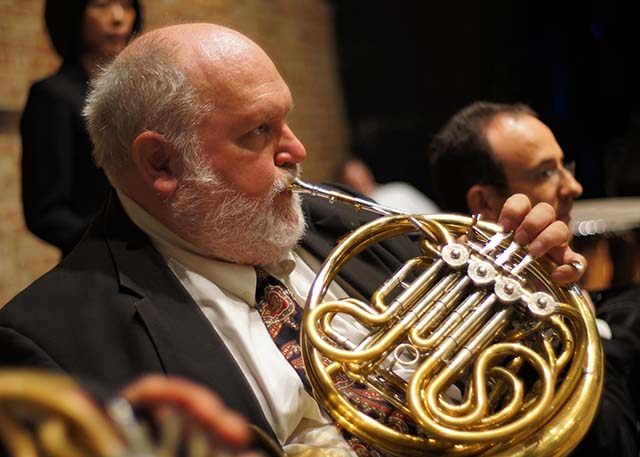
Ronald Sell (St. Olaf Class of 1966) also was in the St. Olaf Band with me. He played French horn with the American Symphony Orchestra of New York City from 1970 to 2012 and was its personnel manager starting in 1980. He also played in the orchestras of Radio City Music Hall and the American Ballet Theater and performed and was musical contractor for 38 Broadway productions. Among the highlights were Stephen Sondheim’s Sunday in the Park with George and Into the Woods (the 1987 original and 2002 revival).
Sell passed away at the age of 68 on July 10, 2012. A Ronald Arthur Sell Drum and Bugle Corps Scholarship has been created to honor his start in a drum and bugle corps in Ft. Dodge, Iowa.

The Night Crawlers attracted Carls, Oles and townies alike to their dances at Sayles-Hill Gym at Carleton and the Armory downtown, led by Marc Reigel (Carleton Class of 1967) of Owatonna on piano. His classmate Mark Headington of Minneapolis played bass and Reigel recruited younger Owatonnans, Mike Jines on guitar, Bill Redeker on drums and Barry Gillespie as lead singer. In 2010, I tracked down band members who were happy to tell me about their adventures on the “sock hop” circuit throughout the Midwest. Three of the five (Marc, Mark and Barry) came to play a gig at Froggy Bottoms that year and returned this past June to perform on Froggy’s Lily PADio. (Reigel has led nine ’50s and ’60s sing-alongs in Northfield since 2010.) “Garage band” compilations have led to internet popularity of their original regional hit, You Say. A fan in the Netherlands set up a fan page for them on Facebook which now has fans from 39 countries. So, the Night Crawlers rock on.
The founder of Carleton’s art department was the colorful Ian B. Stoughton Holbourn, often described as “unsinkable” because he survived the sinking of the Lusitania in 1915. Under his inspirational influence from 1920 to 1935, Carleton had the largest percentage of students taking art courses in any college or university in the world. This Scotsman, often dressed in a flapping blue cape, owned a castle near Edinburgh and was “king” of Foula, an island off Scotland, which he had bought in 1900.
John Maakestad (St. Olaf Class of 1950) joined St. Olaf’s art faculty in 1956. Early on, his paintings reflected the countryside of southeastern Minnesota and Washington’s Cascade mountains. For 20 years, he coordinated college exhibitions and collections and designed sets for the Christmas festival. A man of action, he enjoyed running, cross country skiing and biking, once even riding his bike back to Northfield 2,000 miles from Washington State. A retrospective of his art in anticipation of his retirement in 1994 had the title “A Pilgrimage: I’ll Tell You Where I’m Going When I Get There.” His pilgrimage ended with his death at the age of 83 on April 10, 2012, but he left a legacy of paintings, graphics and sculpture behind, along with his influence on the many students he taught and inspired.
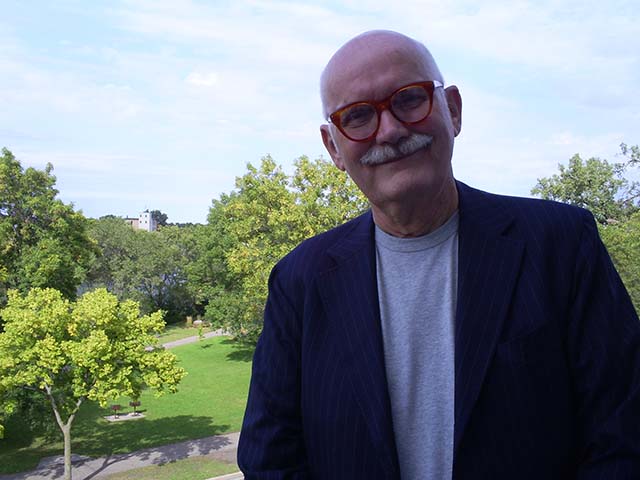
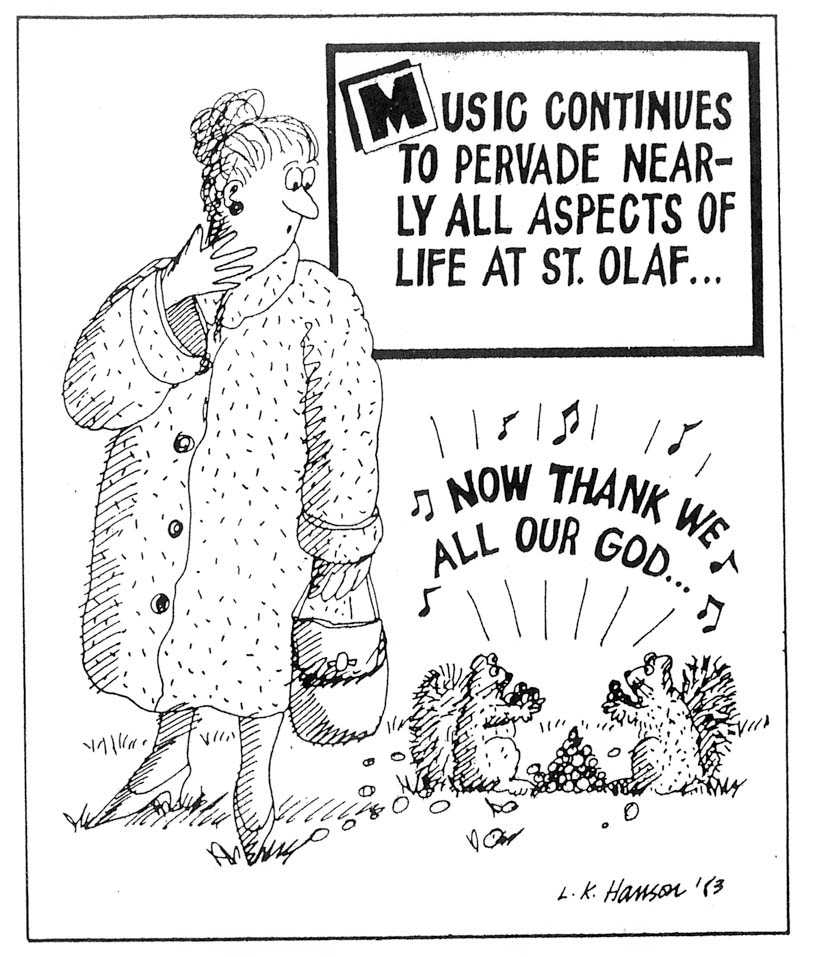
One of Maakestad’s most able students was L.K. Hanson (St. Olaf Class of 1966). Hanson created a popular weekly comic in the Manitou Messenger called Uglies, with characters such as Bert, Gwenellda, Euphasia, Elodea and Professor Drudge dealing with the “follies and foibles” of life on campus. Hanson became a longtime Star Tribune illustrator and writer who still illustrates a weekly Monday feature on the Opinion Exchange page of the paper called You Don’t Say.

Another distinguished Ole artist is Ward Sutton (St. Olaf Class of 1989), whose comic strip Ole Road in the Manitou Messenger followed the adventures of mismatched roommates Adam and Moonstone. Based in New York City, Sutton has contributed cartoons and illustrations to many leading publications such as The New York Times, Time, Rolling Stone, The Nation, The New Yorker, TV Guide and Village Voice and is also noted in the fields of animation and poster art. Sutton recently informed me his Pearl Jam poster is included in a poster art retrospective at the Seattle airport. He has regularly been contributing Op-Ed cartoons for the Boston Globe and his Batman comic book cover sketch is now on display at the Society of Illustrators in New York City. Sutton credits St. Olaf art professor Wendell Arneson as his influential mentor.
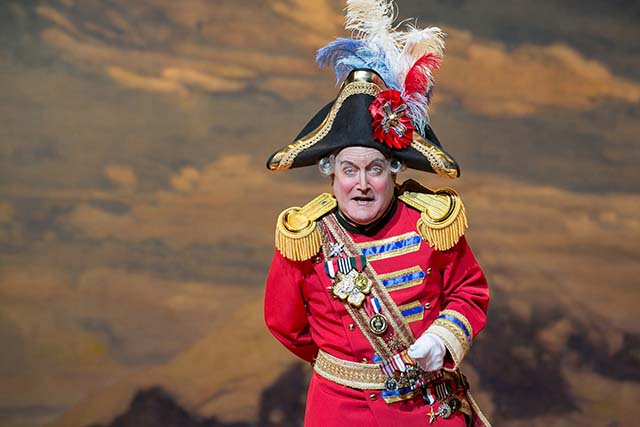
The 1970s produced some amazingly talented performers at the colleges. Gary Briggle (St. Olaf Class of 1975) starred in a popular production of Godspell at St. Olaf directed by Patrick Quade. Briggle has performed often in the Twin Cities, including the Minnesota Opera and the Children’s Theater, and has acted and directed at regional theaters and opera companies throughout the U.S. and in Hungary. In 2012, he directed Into the Woods at the Paradise Center for the Arts in Faribault. This past summer Briggle’s talents were on display at the Ordway Center in St. Paul playing the commissioner in Damn Yankees and Major-General Stanley in The Pirates of Penzance (the Star Tribune review described his performance in the latter as “articulate, precise and funny”).
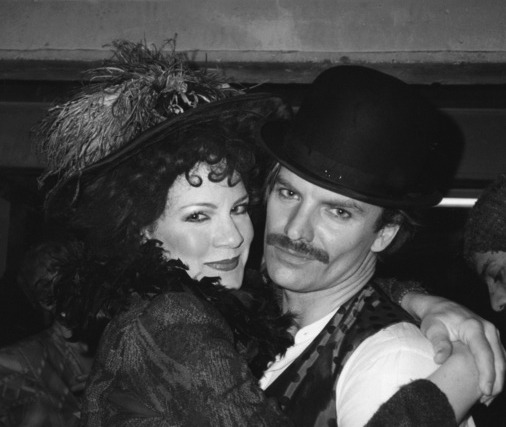
Nancy Ringham (St. Olaf Class of 1977) was also in the Godspell cast with Briggle. Ringham was an understudy who made her Broadway debut in 1981 as Eliza Doolittle with Rex Harrison, the original Professor Higgins, in the 25th anniversary of My Fair Lady. Myrna Johnson, Ruth Legvold and Nancy Haugen drove out from Northfield for a performance and had a surprise in store. Ron Sell was playing principal horn in the orchestra and warmed up by playing a complete version of St. Olaf’s Um Yah Yah song, in their honor.

Sylvia Rhyne (Carleton Class of 1978) appeared in a show in St. Paul with Ringham in 1978 and went on to play many roles in New York, including Christine in Phantom of the Opera in all three major musical versions. She is still performing as part of the award-winning duo Asteria, with Eric Redlinger on guitar, singing medieval love songs from the courts of Burgandy.
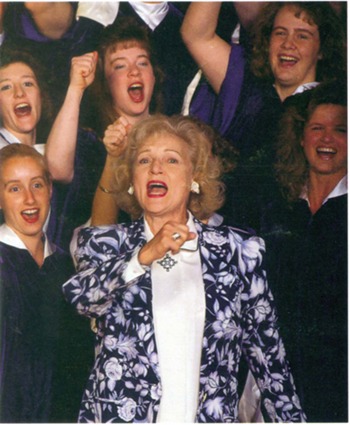
In 1992, Betty White paid a visit to the Minnesota home of her Golden Girls television character, Rose Nylund. White wrote to me in 2008, saying everyone “couldn’t have been warmer and more welcoming. To this day I have my Uff Da cup and shirt.” She went to a women’s softball game and spoke to theater majors about her long career. White is pictured on the cover of my St. Olaf book, singing Um Yah Yah with the St. Olaf Choir. She had learned the song when the Choir visited the set of her show during a 1989 tour.

Now, some quirkiness from Carleton. Why is President Bill Clinton holding up a bust of German poet Johann Christoph Friedrich von Schiller during his commencement address of 2000? A Schiller bust has been passed down from class to class since 1957, popping up at strange moments such as when it was dangled from a helicopter over a football game in 1962 and handed a diploma in 1977. President Steven Poskanzer dined by candlelight with Schiller shortly after becoming president in the fall of 2010. And that year the bust added its solemn presence to the TV show Desperate Housewives.
In 1967, Twins’ owner Cal Griffith invited Carleton College to celebrate the school’s 100th anniversary at a Twins game against the Chicago White Sox. As a stunt, a few Carleton students batted a baseball from Northfield to Metropolitan Stadium in Bloomington, arriving at rush hour. Among the hitters were members of Carleton’s Marvin Rotblatt Softball League, which had been formed in 1964, named after an inept White Sox pitcher. Rotblatt himself came to end-of-season banquets for this league, which is now a marathon softball game played in the spring, one inning for every year of Carleton’s existence. Rotblatt, who died July 16, 2013, at the age of 85, wrote me a letter of thanks after my story appeared in 2011, sending his best wishes to everyone.
Finally, there is the strange case of Joe Fabeetz, who won a college senate race by a write-in landslide at Carleton in 1977. Although Joe was fictitious, his campaign attracted national media attention. Using a picture of himself as Willibald Pirckheimer from 1524, Joe wrote to the college paper that he was “running for my life…for my reality.” Joe continued to write letters to the editor for years, saying “reports of my graduation have been greatly exaggerated.” Joe joined Facebook in 2008 and acquired 41 friends (I was among them). Today he has 141 Facebook friends and lives in Dundas. He is still running for his reality.
Well, sorry to say, I have no room to tell you about the speech of Barack Obama at Carleton’s Skinner Chapel during Black History month in 1999. You will just have to read it in the book.
Historic Happenings at St. Olaf College and Historic Happenings at Carleton College, along with Volume 1 on Northfield, are available at the Northfield Historical Society: 408 Division St. • northfieldhistory.org and at By All Means Graphics: 17 Bridge Square, Northfield • byallmeansgraphics.com.


